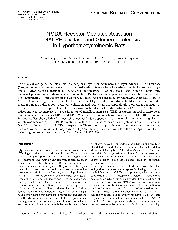摘要
This study investigated the role of NMDA receptor in hyperhomocyteinemia (hHcys)-induced NADPH oxidase (Nox) activation and glomerulosclerosis. Sprague-Dawley rats were fed a folate-free (FF) diet to produce hHcys, and a NMDA receptor antagonist, MK-801, was administrated. Rats fed the FF diet exhibited significantly increased plasma homocysteine levels, upregulated NMDA receptor expression, enhanced Nox activity and Nox-dependent O(2)(center dot-) production in the glomeruli, which were accompanied by remarkable glomerulosclerosis. MK-801 treatment significantly inhibited Nox-dependent O(2)(center dot-) production induced by hHcys and reduced glomerular damage index as compared with vehicle-treated hHcys rats. Correspondingly, glomerular deposition of extracellular matrix components in hHcys rats was ameliorated by the administration of MK-801. Additionally, hHcys induced an increase in tissue inhibitor of metalloproteinase-1 (TIMP-1) expression and a decrease in matrix metalloproteinase (MMP)-1 and MMP-9 activities, all of which were abolished by MK-801 treatment. In vitro studies showed that homocysteine increased Nox-dependent O(2)(center dot-) generation in rat mesangial cells, which was blocked by MK-801. Pretreatment with MK-801 also reversed homocysteine-induced decrease in MMP-1 activity and increase in TIMP-1 expression. These results support the view that the NMDA receptor may mediate Nox activation in the kidney during hHcys and thereby play a critical role in the development of hHcys-induced glomerulosclerosis. Antioxid. Redox Signal. 13, 975-986.
- 出版日期2010-10
